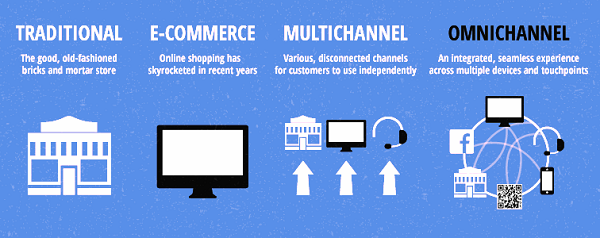How Does the Multi-Channel Device Path Affect Your E-Commerce Strategy?

About two weeks before a recent trip out West with some friends for a four-day mountain bike adventure, we met over beers to go over the equipment, food and adult beverage lists that each of us had agreed to be responsible for outfitting our needs. It turned out, one of the items we needed had not been secured. I immediately got on my smartphone and started searching for possible product among outdoor industry manufacturers we knew provided possible solutions. After discussing the findings with the group, we narrowed down the options and I was charged with obtaining the item. I went home and proceeded to finalize my research, using my laptop and made the purchase on line that evening.
Your outdoor industry brands e-Commerce strategy is critical, but before you decide what type of e-commerce platform you should start with, you need to understand how the shopper moves through the online and off-line shopping eco-system. What was once the habitat of various, disconnected channels for customers to use independently has now become an integrated experience across multiple devices and touchpoints. Today, 65 percent of consumers start their buying journey on a smartphone and 61 percent continue and finish on a PC or laptop. Your marketing strategy must now support an omnichannel journey. Nearly 65 percent of customers expect to receive seamless customer service regardless of the channel they initiate and complete the purchase in.

Original Infographic from SparkPay
"A whopping 65 percent of consumers begin their journey to purchase on a smartphone"

Source: Contevo
It takes a significant time and energy investment to jump start your business and start selling products online, but once the framework is in place, it can be a great source of revenue and can expand your business far beyond your normal reach. No matter what you sell, or how far behind the times you are, you can catch up and expand your brand and your sales online.
Focus intensely on optimizing these touch points, primarily for smartphone usage:
- Micro conversions (such as video plays, product review views, newsletter signups)
- Micro moments (“I want to know,” “I want to go,” “I want to do,” “I want to buy”)
- Cross-device material (such as retargeting, cart abandonment, site personalization)
- Swift, macro conversions (encouraging early-stage sales on your website)
Brick and mortar stores do have a place in the journey if we just figure how to combine it effectively with the online experience.
- Over 40 percent of consumers say it would be helpful if a physical store knew about their own online research conducted, prior to them purchasing (in-store) so they can receive better service. (Forrester)
- A massive 72 percent of online shoppers consider in-store experience as the most important channel when making a purchase. (invesp)
The first step to modernizing your retail business is to build a website that provides an e-commerce element that will work across multiple devices and touch points with potential customers. Once you prove to yourself that you can handle fulfilling orders from a medium that you have complete control of, you can expand to other avenues, but building a powerful, flexible, site is the first key.
You have many choices when it comes to picking an e-commerce platform that makes sense for your business. Investing in a massive site right off the bat may not be wise, but you can design a website on your own that is strong enough to handle your growth and won't have to be rebuilt in 6 months. Many of your options are easy enough to use that you can handle building and maintaining the site yourself without extensive coding, and many platforms provide support to help talk you through any issues you may have.

The standard route that many businesses take is to build a site in Wordpress, Wix, or Shopify, straightforward sites that use pre-made templates to help users create pages and build content and then add a shopping cart element. This option is either completely free or comes with a small monthly fee, in addition to the domain fee and hosting charges you are most likely already paying on your domain provider (i.e. GoDaddy or DreamHost). If you want to set something up quickly, one of these options is probably best and will suit your purposes for the time being, but won't scale well if you want to expand.
The next level of e-commerce sites includes subscription moderns like BigCommerce and Magento. These sites cost more per month, but come with a huge range of features straight of the box and can grow and expand their functionality as your business needs. You'll get better support and more tools to help learn everything you need to build and manage your new site. While it takes more work and a little more expertise, you are less likely to need to rebuild your site in the future to handle your growth.
Finally, if you have the web development team, you could build a completely custom site using a platform like uCommerce and Umbraco. There are many different languages you can build your site in, and lots of different carts you can attach for e-commerce purposes, but for many small businesses, this is an unnecessary expense of time and energy to achieve your goals. The challenge of custom coding your site isn't worth the functionality you could gain.
For our clients, I recommend building a site through Hubspot and using a BigCommerce, Shopify or Magento e-commerce platform to sell a product online. Hubspot fully integrates with these e-commerce options. You get complete control over the look and feel of your site, can build out all the content you want, and get robust customer support from all vendors. The first step in modernizing your e-commerce presence online needs to be a powerful site on which you can sell your product.
Keep reading my blogs and learn about order fulfillment, digital marketing, and new vendors like eBay and Groupon. If you want an opinion on which platform is right for your business, just give me a call!


